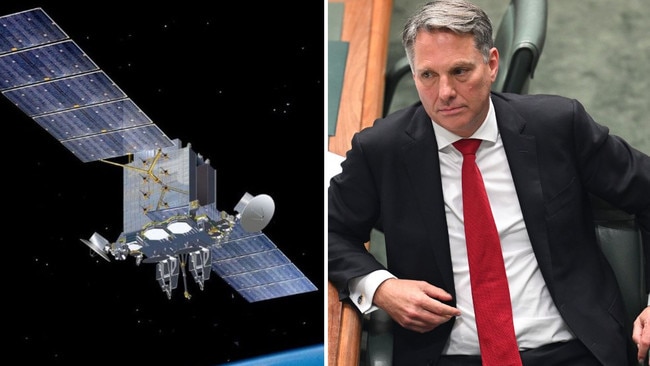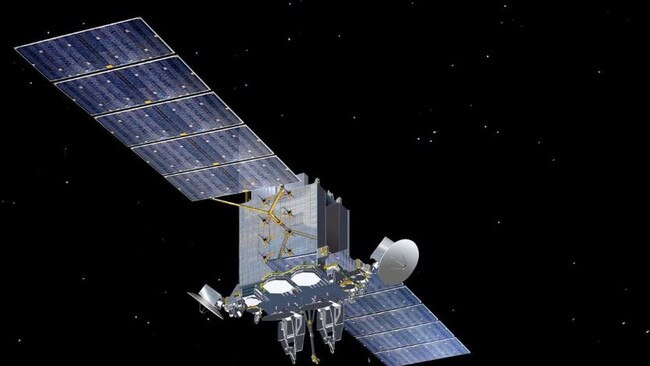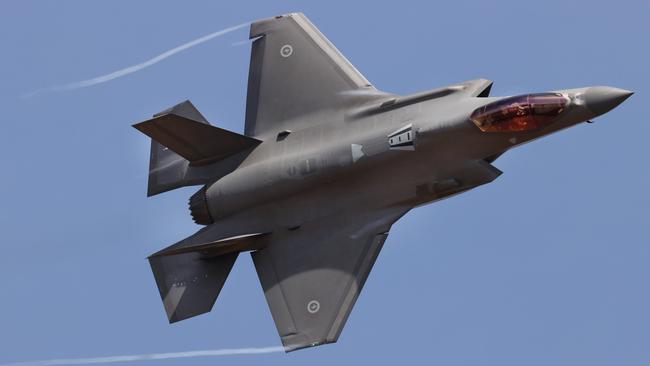
The $7bn sovereign satellite communications system was to have been the connective tissue linking all of the ADF’s capabilities - from F-35s and sub-hunting P8 aircraft, to air warfare destroyers, missile targeting and special forces units undertaking covert missions.
Its axing shows the government’s strategic ambitions are completely out of step with its Defence budget, which is groaning under the strain of AUKUS and plans to acquire new surface ships.
It is a massive blow to Australia’s credibility with the US and other key partners and will leave the ADF begging the Pentagon for bandwidth or having to rely on commercial options in a potential war with China.
The government says the Lockheed Martin-led project no longer meets its strategic priorities, arguing there are now potentially better technology options to provide the same capability.
Don’t believe the spin. The core of the project, known as JP9102, would have been a network of three to five geosynchronous satellites orbiting the earth at 36,500km. It’s the sort of system the US, UK and credible European militaries use, offering constant coverage over a particular geographic region and the highest-level protection against cyber, electronic warfare and physical attacks.
The government says it will now prioritise a multi-orbit system. The implication is that something like Elon Musk’s Starlink network of low earth orbit satellites could do the job.
There’s no doubt Musk’s system works well for everyday users, and has proven to be a key capability for Ukraine in its war against Russia.
But it’s not a hardened military-grade system and, as Kyiv has learned, nation states can’t always rely on the whims of commercial operators in a crisis.
As one well-placed source told The Australian: “You can’t fly your exquisite F-35 stealth fighters into combat and force them to rely on a commercial system.”

All of the government’s defence plans have emphasised the need to move to a so-called “integrated force”, where every platform is a sensor in a lethal military network.
Experts say this is a pipe dream without a sovereign satellite communications capability, which the government no longer has a tender process or timeline to deliver.
The ADF currently pays to use the US’s Wideband Global SATCOM system, and buys bandwidth from commercial provider IntelSat.
But this has long been viewed as a stopgap solution, because even though the US is Australia’s closest ally, it will always prioritise its own personnel and weapons systems in a crisis.
In fact, the US and UK had been relying on Australia to boost their situational awareness of the Indo-Pacific under JP9102. Both will now be shaking their heads and wondering whether Australia can be relied on to deliver on other commitments, including the $368bn AUKUS plan.
The JP9102 decision leaves Australia without any real space program, and the ADF’s much-vaunted Space Command as a backwater without a core reason for its existence.
Defence Minister Richard Marles and Defence Industry Minister Pat Conroy talk a big game on rearming the ADF, but their rhetoric is all hope and aspiration, and flies in the face of their own budget and Defence’s ability to deliver.
The government has pledged just $5.7bn for Defence over the next four years, with most coming in the final year of the forward estimates.
And yet, it had no trouble finding $16bn for its weekend announcement to slash student debt.

At the same time it warns of the most dangerous strategic circumstances since the 1940s, and that the nation can no longer rely on a previously-assumed decade of “strategic warning time” ahead of a potential conflict.
The satellite farce is just one example of the wider dysfunction enveloping Defence and the government’s strategic plans.
As the Weekend Australian reported, five of the navy’s six Collins-class subs are currently out of action.
The Hunter-class frigate program is a debacle of epic proportions, running years late and tens of billions of dollars over budget.
Up to three of the navy’s Anzac-class frigates have been pulled from service amid crippling crew shortages; its offshore patrol boats aren’t seaworthy; and its two new support ships could be out of service for a year due to manufacturing defects.
The army still has no operational units of battlefield helicopters, no armed drones to speak of, and its armoured vehicle program has been running for more than a decade and still hasn’t delivered replacements for the Vietnam-era M113s.
It’s hard to see how the government and its Defence Department could be failing on so many fronts at once. But that’s the dangerous reality of where we find ourselves.




Labor’s decision to cancel the nation’s biggest ever space project has left its plan to transform the ADF into a modern, integrated force in complete disarray.